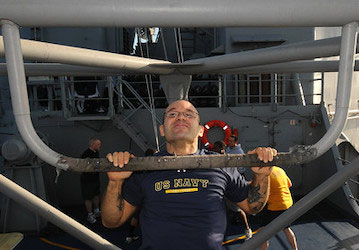Planning your workouts is the hardest part of exercising for many people. How do you know what exercises to do, and in what order? Even if you know the names of exercises and how to do them, it can be a challenge to actually pick specific ones that make sense, both in the context of an individual session and in the big picture of your fitness goals. However, the order you do your exercises in is important to get the most out of your workout and to stay safe while you do it.
Exercise order
The National Strength and Conditioning Association (NSCA) recommends using the following order of exercise categories in resistance-training workouts:
- Power exercises
- Other core or multi-joint exercises
- Assistance or single-joint exercises
This order is largely set by how much fatigue can affect the lifts. As you get tired, your form starts to break down. After that, you don’t get as much benefit from the lifts, and you’re at greater risk of getting injured.
Power exercises are lifts used to generate muscular power. They include the hang and power cleans, snatch, and push jerk. These lifts are difficult and require the most skill. In addition, speed is critical with power exercises. Generally, as fatigue sets in, the first thing to decrease is the speed at which you can do a lift. Once you lose speed, you try to muscle a weight to shoulder height or overhead, and then the lift starts to get dangerous.
Multi-joint exercises, also called “other core” exercises—such as back squat, deadlift, or lunge—come next. These exercises require greater trunk stability to perform correctly. Fatigue doesn’t affect these exercises as much as it does power lifts, but speed and technique will still break down as you tire.
Assistance exercises are usually performed last in a session. This is because they are single-joint exercises such as arm curls or static exercises such as planks, where fatigue is least likely to lead to injury. If you get too tired to finish a lift, you can just put the weight down, compared with having to abort a power lift in a way that you don’t drop the weight on yourself.
The typical order of exercises within each category (power, multi-joint, or assistance) promotes rest and recovery for the muscles used. You can do this either of 2 ways. The first option is to alternate upper-body and lower-body lifts. For example, you start with 3 sets of bench-presses (following appropriate work:rest ratios) and then do 3 sets of lunges. The time it takes to do the lunges gives your chest time to recover before you do another round of chest exercises.
The second option to order your exercises is to alternate push-type exercises with pull-type exercises when working out one body area, such as your arms. The best way to describe push versus pull exercises is to think about how you move the weight relative to your body. Push exercises first move the weight from close to your body to further away. Examples include bench press, squat, and shoulder press. Pull exercises first move the weight towards your body, such as arm curls, pull-ups, deadlifts, and rows. Alternating push and pull exercises also allows time to recover for the muscles you just worked.
You also can group your exercises into supersets and compound sets. In a superset, you perform two exercises in sequence, resting after the two. The pairs of exercises usually work opposing muscle groups, or push and a pull, such as a set of bench presses followed by a set of barbell rows. Supersets are an efficient way to lift because you use the second exercise to rest from the first, in addition to the rest period between sets. A compound set is similar to a superset, except the two exercises involve the same muscle group, such as doing a bench press followed by a chest fly before resting.
Exercise selection
When planning a workout, first decide if you want to do a full-body workout or just one section of your body. Whole-body workouts hit all the major muscle groups in one workout. This type of workout is a good choice for Military Service Members because it is usually more functional and better matches the demands of military work.
You also can plan upper-body and lower-body split workouts. With this plan, you exercise your upper body one day and your lower body another day. This is how many traditional resistance-training workouts are planned because it can be difficult to plan for a whole-body or functional workout during the week.
The last way workouts can be organized is to target specific muscle groups during each workout. For example, one day you only do your chest muscles, and another day just your back. To save some time, you can work one upper-body group and one lower-body group each day. This type of training is used mostly by bodybuilders and others whose main goal is muscle hypertrophy. However, it isn’t the most practical plan to optimize military performance because it doesn’t incorporate much functional training, if any.
Resistance-training workouts should be balanced to include both push and pull exercises. In a workout where you do 4–6 exercises, half of them should be pushes and the other half pulls, so that you balance your training. The only exception is if you’re doing muscle-group splits. In these—because most muscle groups are responsible for either a push or a pull—rather than including both pushes and pulls in one day, you’d have a day for each.
To maximize athletic performance, include multi-planar exercises in your workouts. These are exercises where you move to the sides and rotate, rather than ones that just move forward and back. Examples include 3-way lunges, where you lunge forward and backward, lunge to the side, and lunge forward or backward at a 45-degree angle. This incorporates 3 planes: forward-and-backward, side-to-side, and the diagonal. You can most easily incorporate rotational movement in jump exercises where you jump and spin or just twist your lower body.
When you design your workout program, choose exercises that will help you meet your fitness goals and make you a balanced, well-rounded warrior athlete. Balancing your pushes and pulls will help you get there, but doing your exercises in proper order will make sure you get the most out of your workout and achieve your goals safely.


